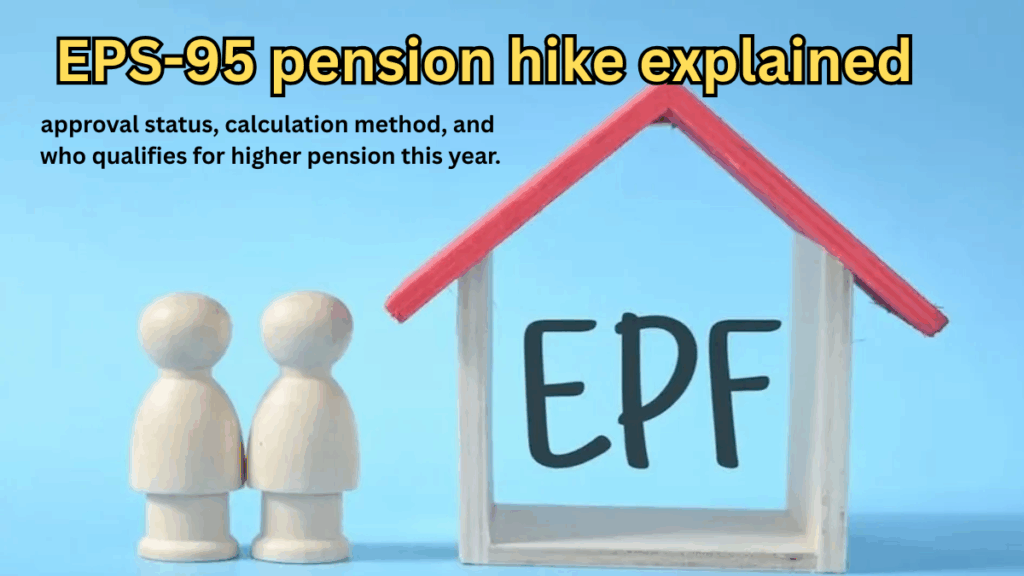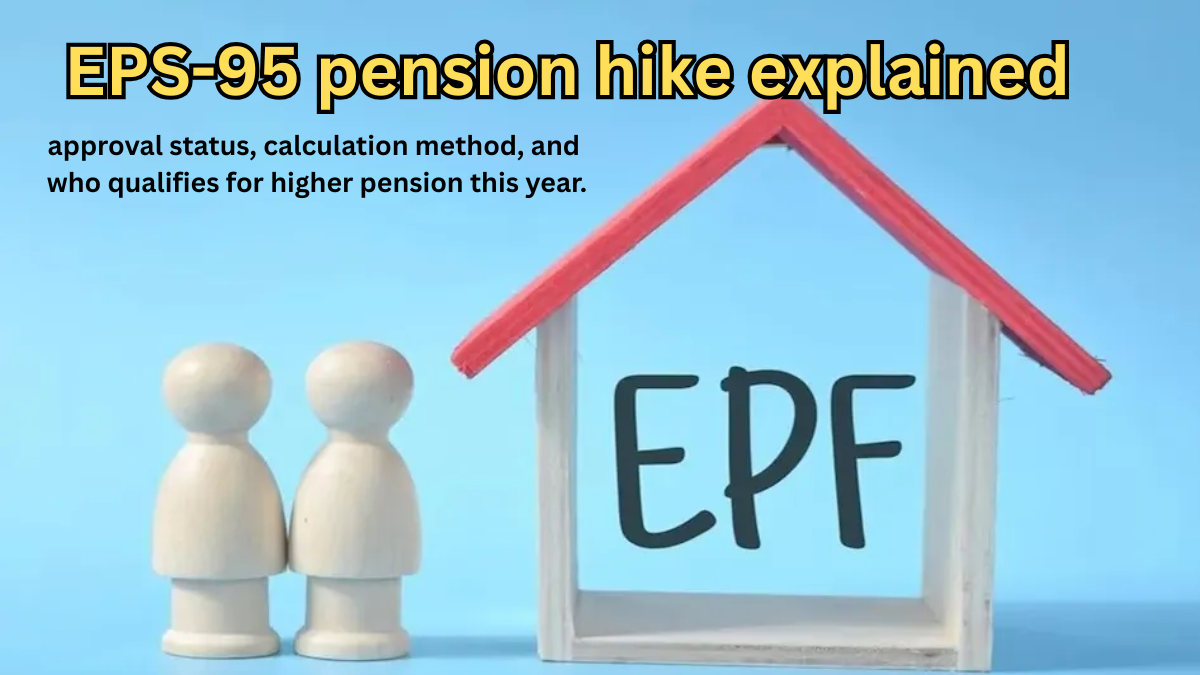Imagine finally reaching retirement and instead of facing uncertainty, you receive a pension that recognises your years of service and helps you live with dignity. That’s the hope behind the EPS-95 pension hike 2025. After long years of waiting, pensioners under the scheme are closely watching how the approval status unfolds—but what exactly is on the table?

What’s the Current Situation (Approval Status)
- The EPS-95 pension hike 2025 has been under discussion for quite some time, as pensioners and employee groups press for a meaningful raise.
- According to a government press release, the current minimum pension under EPS is ₹1,000 per month, supported by budgetary provisions.
- A proposal to raise the minimum pension to as much as ₹7,500 per month exists.
- However, as of now, the formal approval for that full magnitude hike appears pending, and the approval status remains unclear.
- What this means: pensioners should stay alert, because the decision could come soon—and it will impact thousands.
Who Benefits & Who Is Eligible
Eligibility Highlights
To benefit from the EPS-95 scheme (and any hike thereto), consider the following:
- You must have been a member of the EPS-95 scheme under the Employees’ Provident Fund Organisation (EPFO).
- Minimum ten years of pensionable service is required for a regular pension.
- If you retired or will retire at age 58, you are eligible for the regular pension under EPS.
- There is a higher pension scheme option: if eligible, you could receive a higher monthly pension under EPS-95.
In short: If you meet the service criteria and have been part of EPS-95, you stand to benefit—especially if the hike gets the green light.
How Is Pension Under EPS-95 Calculated (Calculation Method)
Understanding the formula will help you estimate your pension—and how the hike might affect you.
The Standard Calculation
| Component | Description |
|---|---|
| Pensionable Salary | For those retiring on/after 1 Sept 2014: the average monthly salary (basic + DA) over the last 60 months. |
| Pensionable Service | The number of years of service that count towards pension—rounded off per rule. |
| Calculation Formula | Monthly Pension = (Pensionable Salary × Pensionable Service) ÷ 70 |
| Minimum Floor | A minimum guaranteed pension (currently ₹1,000) under EPS-95, regardless of the formula in certain cases. |
Higher Pension Option
- If you opted (or were eligible) for the higher pension scheme, your pensionable salary could reflect your full actual salary (beyond the ₹15,000 cap) and thus result in a higher pension.
- Note: Higher pension typically means sacrificing a portion of the lump-sum PF withdrawal, in favour of a higher monthly payout.
What the Proposed EPS-95 Pension Hike 2025 Really Means
When the hike becomes effective, it could reshape retirement for many. Here’s what to expect:
Key Changes
- If the proposed minimum pension is raised to around ₹7,500, that represents a substantial boost from the current ₹1,000 minimum.
- The hike will enhance the “higher pension” concept, giving more weight to service and salary in the last years.
- Pensioners can look forward to improved financial security—and a government signal that pension reform is on the agenda.
Why It Matters
- Rising inflation and cost of living mean that old pension levels are no longer adequate for many retirees.
- A higher pension under EPS-95 supports dignity in retirement, not just meeting basic needs.
- For members who qualified for higher pension schemes, the hike amplifies their benefit significantly.
What’s Still in Limbo
- The approval status remains the catch: while proposals exist, formal sanction, implementation date and rollout plan are not uniformly confirmed.
- Pensioners should track updates and plan accordingly—pending formal notification from EPFO or the government.
Action Steps for Pensioners & Members
If you’re part of EPS-95 or expect to be, here’s what you can do proactively:
- Check your EPFO passbook: Ensure your UAN-linked account reflects contributions and service years correctly.
- Confirm your eligibility: Have you completed the required service? Have you opted (or could you still opt) for higher pension?
- Estimate your pension: Use the formula above to get a ballpark of your monthly payout under both standard and higher pension options.
- Stay updated on policy changes: Keep an eye on EPFO press releases and official notices about the EPS-95 pension hike 2025.
- Document and preserve records: Salary slips, service records, employer contributions—these matter, especially if you pursue higher pension claims.
FAQs (Frequently Asked Questions)
What is the current status of the EPS-95 pension hike 2025?
The proposal for a hike (including an increase in minimum pension) is under consideration. The approval status is not yet fully finalised, so pensioners are awaiting official confirmation.
Who will benefit from the pension hike under EPS-95?
Employees who fall under the EPS-95 scheme, have completed eligibility criteria (such as minimum service of 10 years), and qualify for a pension will benefit. Those who opted for the higher pension scheme stand to gain more.
How is the monthly EPS-95 pension calculated?
Monthly Pension = (Pensionable Salary × Pensionable Service) ÷ 70. Pensionable Salary is typically the average of last 60 months’ salary; Pensionable Service is the years of eligible service.
What is the higher pension option and how does it affect benefits?
Under the higher pension scheme, eligible members who opted (or can still opt) may calculate pension based on actual salary (above caps) resulting in a higher monthly amount. However, it reduces the lump-sum withdrawal from the PF account.
Conclusion
The EPS-95 pension hike 2025 holds much promise: for those who dedicated decades of work, it could mean a more secure, dignified retirement. The key is to keep a close watch on the approval status, understand your eligibility, and use the calculation framework to know what a higher pension might look like.
If you’re part of this scheme—or know someone who is—now is the time to get ahead, check the details, and be ready when the final decision comes through.
Click here to learn more
